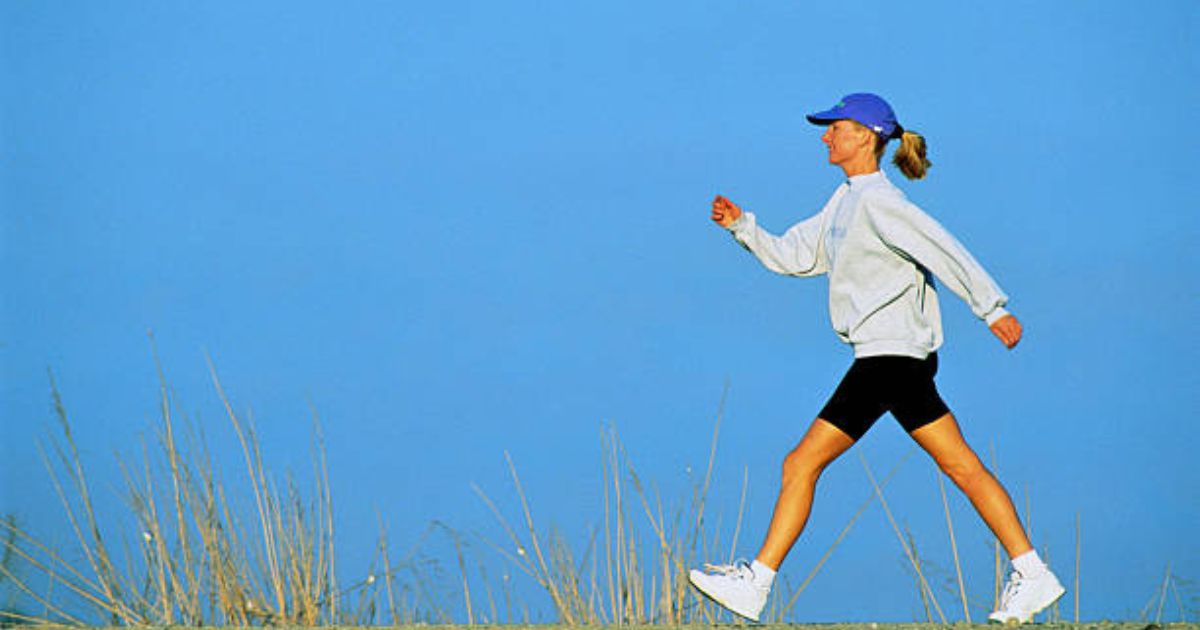Race walking is a unique endurance sport where athletes walk at a fast pace while maintaining constant contact with the ground, unlike running. The key to race walking is a specific technique: the supporting leg must be straight when it touches the ground and remain straight until it passes directly under the body.
Table of Contents
ToggleThis requires exceptional skill, endurance, and focus, as athletes are constantly monitored by judges to ensure compliance with the rules.
Race walking, often dismissed as a peculiar cousin of running, is a discipline that demands precision, endurance, and a unique blend of athleticism and artistry.
It’s a sport that requires athletes to push the boundaries of human speed while adhering to a strict set of rules that differentiate it from its more explosive counterpart.
The Essence of Race Walking
At its core, race walking is a test of endurance. Athletes compete over distances ranging from 3,000 meters to a grueling 100 kilometers, pushing their bodies to the limit. Yet, unlike running, race walkers must maintain constant contact with the ground. This seemingly simple rule is the cornerstone of the sport and the source of much of its complexity.
To ensure compliance, a team of judges scrutinizes every step. The rules are clear: a race walker’s leg must be straight when it makes contact with the ground and remain straight until it passes directly under the body. Any visible loss of contact or bending of the knee is a foul, leading to a warning or disqualification.
The Intricate Rules of Race Walking
Race walking, while appearing to be a simple progression of steps, is governed by a strict set of rules that differentiate it significantly from running.
- Constant Ground Contact
The most basic and defining rule of race walking is the requirement of constant ground contact. This means that at least one foot must be in contact with the track or road at all times.
Any visible moment where both feet are off the ground constitutes a loss of contact and is considered a foul. This rule is the cornerstone of race walking and is what sets it apart from running.
- The straight-leg rule
The second crucial rule pertains to the position of the athlete’s leg. The supporting leg must be straightened from the moment it touches the ground until it passes directly under the body. Any visible bending of the knee during this phase is considered a violation. This rule ensures that the athlete is truly walking and not running.
- Role of Judges
To enforce these rules, a team of experienced judges carefully observes the competitors. They are positioned at various points along the course to have a clear view of the athletes’ technique. Judges are trained to identify subtle violations of the rules, and their decisions are final.
- Penalties for Violations
When a judge observes a violation of the rules, they signal to the athlete. A yellow card is a warning for a near violation, indicating that the athlete was close to breaking the rules but not decisively enough to warrant disqualification.
A red card, on the other hand, is issued for a clear and definite violation, resulting in the disqualification of the athlete.

It’s important to note that while the rules may seem straightforward, executing them at high speeds while maintaining balance and rhythm is incredibly challenging. This is what makes race walking a unique and demanding sport.
The Unique Gait
The demands of race walking have led to the development of a distinctive gait. To maximize speed while adhering to the rules, race walkers adopt an exaggerated hip rotation and arm swing. Their legs appear to be almost locked straight as they propel themselves forward. It’s a mesmerizing sight, a ballet of controlled power.
But don’t be fooled by the apparent slowness of the gait. Elite race walkers can cover astonishing distances at impressive speeds. The sport is a testament to human adaptability and the body’s capacity to find innovative ways to overcome challenges.
Race Walking Technique
- Constant Ground Contact: Maintaining continuous contact with the ground.
- Straight Leg: The supporting leg must remain straight from contact to passing under the body.
- Exaggerated Hip Rotation: Propels the body forward.
- Vigorous Arm Swing: Acts as a counterbalance.
- Upright Posture: Maintains balance and efficiency.
- Rhythm and Balance: Finding the perfect combination of speed and technique.
The Mental Game
Beyond the physical demands, race walking is a mental battle. Hours spent on the road, often alone, require immense discipline and focus. Athletes must find ways to stay motivated and overcome the physical and psychological barriers that inevitably arise.
The pressure of the judges adds another layer of complexity. The constant scrutiny can be mentally draining. A single mistake can mean the difference between victory and defeat.
Olympic Glory
Race walking has been an Olympic sport since the early 20th century, with events for both men and women. While it may not enjoy the same level of popularity as some other track and field disciplines, it has a dedicated following and produces athletes of extraordinary caliber.

Olympic champions in race walking are revered for their endurance, technical proficiency, and mental toughness. Their victories are hard-earned and celebrated by those who understand the intricacies of the sport.
Beyond Competition
Race walking is not solely confined to elite athletes. It’s a sport that can be enjoyed by people of all ages and fitness levels. Walking for fitness and pleasure shares many similarities with race walking, and many recreational walkers appreciate the opportunity to challenge themselves against the clock.
Whether you’re a seasoned athlete or a casual walker, there’s something to admire about race walking. It’s a sport that demands respect for its athletes and a deeper understanding of the human body’s capabilities.
Click to read about In-detail Rules of Handball.
In conclusion, race walking is a fascinating blend of athleticism, precision, and endurance. It’s a sport that rewards dedication, mental fortitude, and a deep understanding of the rules. As it continues to evolve, race walking promises to captivate audiences and inspire athletes for generations to come.
FAQ’s
What is meant by race walking?
Race walking is a unique endurance sport where athletes walk at a fast pace while maintaining constant contact with the ground, unlike running. The key to race walking is a specific technique: the supporting leg must be straight when it touches the ground and remain straight until it passes directly under the body.
How do race walkers go so fast?
Race walkers achieve impressive speeds through a combination of factors:
- Efficient Technique: Their exaggerated hip rotation, arm swing, and rapid turnover of steps maximize stride length and speed without breaking the rules.
- Exceptional Endurance: Like long-distance runners, race walkers possess incredible stamina to sustain high speeds over long distances.
- Muscle Power: Strong legs and core muscles are essential for propelling the body forward efficiently.
- Mental Toughness: The mental focus required to maintain correct technique while pushing physical limits is crucial for race walking success.
Essentially, race walkers are highly skilled athletes who have perfected a unique and demanding form of locomotion.
What are the main rules of race walking?
Race walking requires athletes to maintain constant ground contact while keeping their supporting leg straight from the moment it touches the ground until it passes directly under the body. Judges closely observe competitors to ensure compliance, issuing warnings or disqualifications for any violations.







